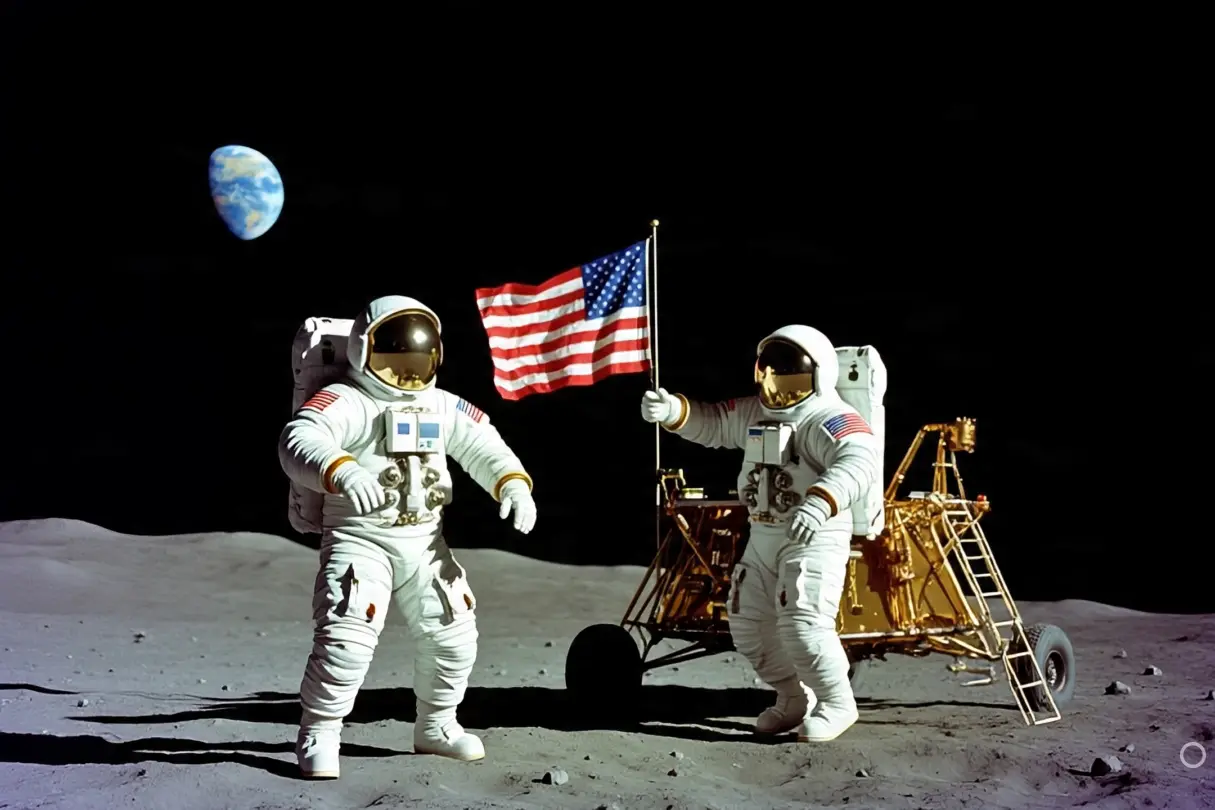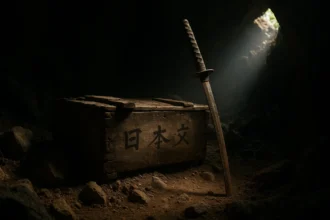📺 The World Watched History Happen in 1969
On July 20, 1969, over 600 million people sat glued to their TVs as Neil Armstrong stepped off the Apollo 11 lunar module and declared, “That’s one small step for man, one giant leap for mankind.” It was a defining moment—not just in American history, but in human achievement. The Moon landing became a symbol of what science and courage could achieve in the face of impossible odds.
But not everyone bought it.
🤨 Enter the Moon Landing Skeptics
Almost as quickly as the celebrations faded, whispers of doubt began. By the 1970s, skeptics started to raise questions that would eventually snowball into one of the most enduring conspiracy theories in modern history: the moon landing was faked.
At the center of this claim is the belief that NASA staged the entire event on Earth, possibly in a secret soundstage directed by none other than… Stanley Kubrick. Yes, that Stanley Kubrick—the mind behind 2001: A Space Odyssey. To many, it sounds absurd. Yet, decades later, polls still show that a surprising number of people—roughly 5 to 10% of Americans—aren’t convinced we ever made it to the Moon.
Let’s break down why.
🧠 What the Conspiracy Theorists Believe
Moon landing deniers point to a handful of visual “inconsistencies” from the Apollo missions. These so-called anomalies form the backbone of their argument that the footage was faked. Here are the most talked-about:
💡 The Lighting “Problem”
Skeptics argue that the lighting in the moon landing photos proves artificial light was used. They point out that shadows seem to fall in different directions and question how some parts of the lunar module are well-lit while others are in shadow—despite there being only one light source: the Sun.
🚩 The Waving Flag
One of the most iconic images is Buzz Aldrin saluting the American flag. Conspiracy theorists claim the flag appears to flutter as if caught in a breeze—which, in the Moon’s airless environment, should be impossible.
🌌 No Stars in the Sky
Another go-to claim is that there are no stars visible in any Apollo photos. If astronauts were really in space, shouldn’t the sky be full of stars?
📷 Too Good to Be True?
They also question how astronauts managed to take such sharp, well-composed photos with bulky equipment and thick gloves—suggesting the images were carefully staged, not spontaneously captured on the Moon.
🛠️ Technology Wasn’t “Good Enough”
And finally, some skeptics argue that 1960s technology simply wasn’t advanced enough to pull off a successful moon mission. If your phone has more computing power than the Apollo spacecraft, how could they possibly navigate 238,000 miles to the Moon and back?
🚀 NASA Responds With the Receipts
NASA has addressed all of these claims with consistent and science-backed rebuttals.
☀️ Shadow Play
The lighting on the Moon behaves differently than on Earth because the lunar surface is highly reflective. Uneven terrain and reflective surfaces can cause shadows to appear distorted. As for brightness in shaded areas, it’s often due to light bouncing off the lunar ground or the astronauts’ own white suits.
🏳️ The Flag Wasn’t Waving—It Was Just Unfolding
The flag wasn’t actually waving in the wind. It looked that way because it was designed with a horizontal bar to hold it out. When the astronauts were twisting the pole into the Moon’s surface, the motion caused the flag to ripple—and with no atmosphere to dampen it, it kept moving for a bit before settling.
🌠 Where Are the Stars?
The cameras used on the Moon were set for daylight exposure. The Moon is incredibly bright during the day, and the camera settings didn’t allow faint stars to show up in the photos. Just like on Earth, you don’t see stars in the daytime sky, and you don’t see them in high-exposure photos unless they’re specifically set to capture low light.
📸 Photo Quality = Training + Equipment
Yes, the astronauts wore bulky gloves and had limited mobility. But they trained relentlessly on how to use the Hasselblad cameras they brought. The cameras were also mounted to their suits, and the Moon’s low gravity made movement easier than you’d think. And let’s not forget: hundreds of images were taken. NASA only published the best ones.
🧑🚀 1960s Tech Did the Job
It’s true that Apollo’s onboard computers were nowhere near as powerful as a smartphone—but they didn’t need to be. The spacecraft didn’t require fancy apps or a touchscreen. It just needed to follow coded instructions and receive signals. Much of the navigation was manual, and the mission was backed by thousands of engineers monitoring every step from Earth.
🎬 Hollywood Didn’t Help
Movies like Capricorn One (1978), which featured a faked Mars landing, helped reinforce doubts. Stanley Kubrick’s 2001: A Space Odyssey looked so realistic for its time that it sparked a bizarre theory: that Kubrick was hired by the U.S. government to fake the moon footage. Kubrick never confirmed or denied this (because it’s absurd), but conspiracy theorists latched onto it anyway.
In more recent years, shows like The X-Files and films like Interstellar and Moonfall have kept space-based conspiracy theories alive in pop culture. Add to that the power of social media echo chambers, and you get a fertile breeding ground for skepticism—despite overwhelming evidence to the contrary.
👽 Why People Still Believe
So why does this theory continue to exist?
Part of it comes down to distrust in government. The Vietnam War, Watergate, and surveillance scandals have left a lasting scar. For some, believing the moon landing was a hoax is less about the evidence and more about questioning authority.
Then there’s the internet. YouTube rabbit holes and Reddit forums can make even the wildest theories feel “researched.” Add flashy thumbnails and dramatic music, and suddenly a shaky argument feels like gospel truth.
It’s also just… fun. The idea that the greatest scientific achievement of the 20th century might be an elaborate lie is irresistible to the curious and cynical alike. It’s the same energy that fuels Bigfoot sightings and Area 51 myths. There’s something thrilling about thinking you know a secret the rest of the world doesn’t.
🌌 The Moon Landing Still Inspires
Despite the conspiracies, the Moon landing remains one of humanity’s boldest achievements. The evidence is overwhelming: thousands of engineers and scientists were involved, the Soviet Union tracked Apollo’s journey, retroreflectors placed on the Moon still bounce lasers back to Earth, and samples brought back match nothing found on Earth.
The real story is far more impressive than any hoax could ever be.
But maybe that’s why the conspiracy lives on—it’s just hard to believe we actually did something that incredible.




